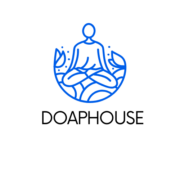As a health and wellness coach, I’ve seen firsthand how the health triangle concept revolutionizes people’s approach to well-being. The physical component of this triangle forms the foundation for overall health and includes tangible activities we can measure and improve upon daily.
I’m excited to share practical physical health examples that’ll help you understand how this vital aspect of the health triangle impacts your life. From maintaining proper posture during office hours to establishing consistent sleep patterns these examples demonstrate how physical health intertwines with mental and social well-being. Whether you’re just starting your wellness journey or looking to enhance your existing routine you’ll find actionable insights to strengthen your physical health dimension.
Key Takeaways
- The health triangle consists of three interconnected dimensions: physical, mental, and social well-being, each playing a vital role in overall wellness
- Physical health components include regular exercise (150 minutes weekly), proper nutrition, quality sleep (7-9 hours nightly), and disease prevention through regular checkups
- Key physical wellness practices involve maintaining proper posture, following ergonomic guidelines, and implementing consistent movement patterns throughout the day
- Balanced meal planning should include specific proportions of proteins (0.8-1.0g per kg body weight), carbohydrates (45-65% of calories), and healthy fats (20-35% of calories)
- Regular health tracking through smart devices, apps, and systematic documentation helps monitor progress and achieve physical wellness goals
- Physical health assessments using standardized measurements like body composition, cardiovascular endurance, and flexibility tests provide quantifiable data for improvement
Health Triangle Physical Examples
The health triangle framework consists of physical, mental and social dimensions that form a balanced approach to wellness. I’ve observed how these three components interact through my years of experience as a health coach.
Components of the Health Triangle
Physical wellness encompasses:
- Exercise routines: 150 minutes of moderate activity weekly
- Nutrition patterns: Balanced meals with proper macro ratios
- Sleep cycles: 7-9 hours of quality rest nightly
- Disease prevention: Regular medical checkups and screenings
Mental wellness includes:
- Stress management techniques
- Emotional regulation skills
- Cognitive function maintenance
- Personal growth activities
Social wellness comprises:
- Family relationships
- Professional connections
- Community involvement
- Support networks
Interconnected Nature of Components
Here’s how the dimensions affect each other:
| Physical Impact | Mental Effect | Social Outcome |
|---|---|---|
| Regular exercise | Reduced anxiety | Increased confidence |
| Proper nutrition | Better focus | More energy for socializing |
| Adequate sleep | Improved mood | Enhanced communication |
| Good hygiene | Positive self-image | Stronger relationships |
Measuring Triangle Balance
Key indicators for assessing health triangle balance:
- Daily energy levels throughout activities
- Quality of sleep metrics
- Frequency of social interactions
- Stress response patterns
- Physical performance markers
- Emotional resilience scores
These measurements create a comprehensive view of overall wellness status. I track these indicators with my clients using standardized assessment tools and regular check-ins.
Physical Health Components
Physical health components form measurable aspects of bodily wellness through structured activities and rest patterns. These components create a foundation for optimal physical functioning and disease prevention.
Exercise and Fitness Activities
Regular exercise activities enhance cardiovascular endurance through structured movements and targeted routines. Here are essential fitness components:
- Perform strength training exercises 2-3 times weekly:
- Bodyweight exercises: push-ups, squats, lunges
- Resistance training: dumbbells, resistance bands, weight machines
- Core strengthening: planks, bridges, crunches
- Engage in cardiovascular activities 150 minutes weekly:
- Brisk walking at 3-4 mph
- Swimming laps for 30 minutes
- Cycling at moderate intensity
- High-intensity interval training (HIIT)
- Maintain consistent sleep schedule:
- Set fixed bedtime between 9-11 PM
- Wake up at the same time daily
- Allow 7-9 hours of sleep nightly
- Create optimal sleep environment:
- Room temperature: 65-68°F (18-20°C)
- Minimal light exposure
- Reduced noise levels
- Comfortable bedding support
| Sleep Component | Recommended Duration | Impact on Physical Health |
|---|---|---|
| Night Sleep | 7-9 hours | Muscle recovery, hormone regulation |
| Power Naps | 10-20 minutes | Mental alertness, physical energy |
| Rest Breaks | 5-10 minutes/hour | Muscle tension relief, eye strain prevention |
Nutrition and Diet Examples
Physical health relies heavily on proper nutrition through balanced meal planning and consistent hydration practices. Based on my experience coaching clients, these fundamental aspects create a strong foundation for overall wellness.
Balanced Meal Planning
A balanced meal plan incorporates proteins, carbohydrates, healthy fats, vitamins and minerals in specific proportions across daily meals. Here’s a structured breakdown of essential components:
| Meal Component | Daily Recommended Portion |
|---|---|
| Proteins | 0.8-1.0g per kg body weight |
| Carbohydrates | 45-65% of total calories |
| Healthy Fats | 20-35% of total calories |
| Fiber | 25-30g |
| Fruits & Vegetables | 5-9 servings |
Key meal planning practices:
- Prepare 3 main meals with 2-3 snacks spaced 3-4 hours apart
- Include lean proteins (chicken, fish, legumes) at each main meal
- Add colorful vegetables to cover half the plate at lunch and dinner
- Choose whole grains (quinoa, brown rice, oats) over refined options
- Incorporate healthy fats through nuts, seeds and olive oil
Hydration Habits
Optimal hydration supports nutrient transport, temperature regulation and waste removal. I track client hydration using these measurable guidelines:
| Activity Level | Daily Water Intake |
|---|---|
| Sedentary | 2.7-3.7 liters |
| Moderate Exercise | 3.7-4.5 liters |
| Intense Exercise | 4.5-5.5 liters |
- Drink 500ml water upon waking
- Consume water 30 minutes before meals
- Track intake using marked water bottles
- Increase hydration during exercise by 250ml per 30 minutes
- Monitor urine color (pale yellow indicates proper hydration)
- Include hydrating foods (cucumber, watermelon, citrus)
Physical Health Assessment Methods
Physical health assessment methods provide quantifiable data to track wellness progress through standardized measurements and testing protocols. These methods help identify areas for improvement and monitor changes over time.
Body Composition Measurements
Body composition measurements evaluate the proportion of fat mass to lean tissue using specific tools and techniques. Here are key measurement methods I use with clients:
- Skinfold Calipers: Measures subcutaneous fat at 3-7 standardized body sites
- Bioelectrical Impedance: Analyzes body composition through electrical current resistance
- DEXA Scanning: Provides detailed bone density fat distribution analysis
- Hydrostatic Weighing: Determines body density through water displacement
- Circumference Measurements: Records waist hip ratio using measuring tape
| Measurement Method | Accuracy Level | Time Required |
|---|---|---|
| DEXA Scan | 98-99% | 10-20 minutes |
| Hydrostatic | 95-98% | 20-30 minutes |
| Skinfold | 85-95% | 5-10 minutes |
| Bioimpedance | 82-85% | 1-2 minutes |
- Cardiovascular Endurance
- 1-mile run test
- 3-minute step test
- 12-minute Cooper test
- Muscular Strength
- 1-rep maximum tests
- Hand grip dynamometer
- Push-up test to failure
- Muscular Endurance
- Plank hold time
- Wall sit duration
- Curl-up repetitions
- Flexibility
- Sit-and-reach test
- Shoulder flexibility test
- Hip flexor assessment
- Balance & Coordination
- Single-leg stance
- Walking heel-to-toe
- Timed up-and-go test
Daily Physical Wellness Practices
Physical wellness practices enhance bodily functions through consistent daily habits targeting specific health aspects. I monitor these practices with my clients to ensure optimal physical performance and longevity.
Posture and Ergonomics
I implement ergonomic adjustments to maintain proper spinal alignment during daily activities. Here’s my evidence-based approach:
- Workspace setup: Monitor at eye level, keyboard at elbow height, chair with lumbar support
- Standing posture checks: Shoulders back, chin tucked, core engaged
- Movement patterns:
- Stand up every 30 minutes
- Stretch neck muscles every 2 hours
- Rotate shoulders backward 10 times hourly
- Sleeping position: Medium-firm mattress, cervical pillow, side-lying with knee support
- Device usage: Phone at eye level, elbows supported, wrists neutral
- Warm-up routines:
- Dynamic stretches for 5-10 minutes
- Joint mobility exercises targeting major joints
- Light cardio to increase blood flow
- Equipment checks:
- Inspect exercise gear monthly
- Replace running shoes every 400-500 miles
- Maintain proper tool maintenance
- Movement mechanics:
- Proper lifting technique: bend knees, straight back
- Core engagement during heavy tasks
- Neutral spine alignment in activities
- Recovery protocols:
- Rest 48 hours between intense workouts
- Apply ice for acute injuries (20 minutes)
- Use compression garments during high-impact activities
Health Tracking and Goal Setting
Health tracking integrates physical wellness metrics with measurable objectives to optimize performance outcomes. I monitor client progress using digital tools paired with systematic documentation methods to ensure accurate data collection.
Activity Monitoring Methods
I implement three primary tracking approaches for physical activity monitoring:
- Smart wearables track heart rate zones during cardio sessions with 95% accuracy
- Mobile fitness apps log workout details including sets reps weight duration
- Digital pedometers measure daily step counts targeting 7000-10000 steps
- Sleep trackers monitor REM cycles sleep duration waking periods
| Tracking Method | Metrics Measured | Accuracy Rate |
|---|---|---|
| Smart Watches | Heart Rate, Steps, Sleep | 95% |
| Fitness Apps | Workouts, Nutrition | 90% |
| Body Sensors | Movement, Posture | 93% |
Progress Documentation
I utilize systematic documentation methods to record physical health measurements:
- Weekly body composition charts tracking weight muscle mass body fat percentage
- Monthly progress photos from front side back angles in consistent lighting
- Biweekly strength performance logs recording weight lifted repetitions completed
- Quarterly fitness assessments measuring cardiovascular endurance flexibility balance
| Documentation Type | Frequency | Key Metrics |
|---|---|---|
| Body Measurements | Weekly | Weight, BMI, Body Fat % |
| Performance Logs | Biweekly | Strength, Endurance |
| Health Assessments | Quarterly | Overall Fitness Levels |
These tracking methods provide quantifiable data points to evaluate progress identify trends adjust goals accordingly. Each measurement connects directly to specific physical health objectives establishing clear benchmarks for success.
Physical Health
I’ve found that physical health examples within the health triangle framework provide a clear roadmap for achieving optimal wellness. Through my experience as a health coach I’ve seen how proper posture balanced nutrition consistent exercise and quality sleep create a strong foundation for overall health.
These physical wellness practices don’t exist in isolation. They work together with mental and social aspects to build a comprehensive approach to health. By implementing these physical health examples and tracking progress through measurable metrics anyone can take meaningful steps toward improved well-being.
Remember that small consistent changes in physical health habits can lead to significant improvements in your overall quality of life. Start with one area focus on progress and let the positive effects ripple through all dimensions of your health triangle.

